
Top 10 Shure SM58 Pro XLR Dynamic Microphone – Review shure beta 58a – Oemiu
Shure SM58: The Unbreakable Standard and its Progeny, the Beta 58A – A Comprehensive Review
The Shure SM58 stands as an undisputed icon in the world of microphones, a ubiquitous presence on stages and in studios for decades. Its rugged durability, consistent performance, and affordable price have cemented its place as the go-to choice for countless vocalists, public speakers, and even instrumentalists. While the SM58 remains a cornerstone, its sibling, the Shure Beta 58A, offers a more refined and powerful alternative, catering to performers seeking enhanced clarity and feedback rejection. This review delves into the characteristics, strengths, and weaknesses of both microphones, providing a comparative analysis to help users determine which suits their specific needs.
The Legendary Shure SM58: Simplicity, Reliability, and a Proven Track Record
The SM58’s enduring popularity stems from its inherent design philosophy: simplicity and reliability. At its heart lies a dynamic cartridge with a cardioid polar pattern. This pattern focuses on picking up sound directly in front of the microphone while rejecting sound from the rear and sides, minimizing unwanted noise and feedback. The SM58’s frequency response is tailored for vocals, with a gentle roll-off in the low frequencies and a slight boost in the upper-midrange, contributing to a clear and present vocal sound.
Key Features and Benefits of the SM58:
- Durability: The SM58 is famously robust. Its sturdy metal construction, coupled with a spherical mesh grille, can withstand the rigors of live performance. It’s often cited for its ability to survive drops, impacts, and even accidental spills with minimal damage. This legendary durability makes it an ideal choice for touring musicians and venues where equipment is subjected to heavy use.
- Feedback Rejection: The cardioid polar pattern, combined with internal shock mounting, effectively minimizes feedback issues. While not completely immune, the SM58 is significantly less prone to feedback compared to microphones with wider or more omnidirectional patterns. This makes it a reliable choice for live settings where monitor placement and stage volume are critical factors.
- Frequency Response: The tailored frequency response of the SM58 emphasizes vocal clarity and intelligibility. The subtle bass roll-off reduces muddiness from proximity effect, while the gentle upper-midrange boost enhances presence without sounding harsh. This balanced frequency response allows vocals to cut through the mix without requiring excessive equalization.
- Affordability: Compared to many other professional microphones, the SM58 is remarkably affordable. This accessibility makes it a popular choice for beginners, semi-professional musicians, and budget-conscious studios. Its affordability doesn’t compromise quality; the SM58 consistently delivers reliable performance that rivals more expensive options.
- Versatility: While primarily designed for vocals, the SM58’s robust design and frequency response make it surprisingly versatile. It can be used to record or amplify instruments such as snare drums, guitar amplifiers, and even brass instruments. Its reliability and affordability make it a valuable asset in any studio or live sound setup.
The Shure Beta 58A: A Refined and More Powerful Alternative
The Shure Beta 58A builds upon the foundation of the SM58, offering a more refined and powerful performance. While sharing the same basic dynamic cartridge technology, the Beta 58A incorporates several key enhancements that result in improved clarity, sensitivity, and feedback rejection.
Key Features and Benefits of the Beta 58A:
- Supercardioid Polar Pattern: The Beta 58A employs a supercardioid polar pattern, which is narrower and more focused than the SM58’s cardioid pattern. This tighter pattern provides even greater rejection of off-axis noise and feedback, making it ideal for loud stages and challenging acoustic environments.
- Enhanced Sensitivity: The Beta 58A boasts higher sensitivity than the SM58, meaning it captures more sound with less input. This results in a louder and more present signal, requiring less gain from the microphone preamp. This higher output can be particularly beneficial for vocalists with quieter voices or in situations where a strong signal is needed.
- Extended Frequency Response: The Beta 58A features a wider and more extended frequency response compared to the SM58. This wider range captures more detail and nuance in the vocal performance, resulting in a more natural and accurate sound. The extended high-frequency response contributes to a brighter and more articulate vocal sound.
- Neodymium Magnet: The Beta 58A utilizes a neodymium magnet, which is significantly stronger than the magnet used in the SM58. This stronger magnet contributes to the microphone’s increased sensitivity and improved transient response. The improved transient response allows the microphone to capture the subtle nuances and dynamics of the vocal performance with greater accuracy.
- Reduced Proximity Effect: While both microphones exhibit proximity effect (an increase in bass response when the microphone is close to the sound source), the Beta 58A’s proximity effect is less pronounced. This allows vocalists to work closer to the microphone without experiencing excessive bass buildup, resulting in a clearer and more balanced sound.
SM58 vs. Beta 58A: A Comparative Analysis
While both the SM58 and Beta 58A are excellent vocal microphones, they cater to different needs and preferences. The SM58 excels in its robustness, affordability, and forgiving nature. Its balanced frequency response and cardioid pattern make it a reliable choice for a wide range of vocalists and applications. It’s a workhorse microphone that can withstand the rigors of live performance and deliver consistent results.
The Beta 58A, on the other hand, offers a more refined and powerful performance. Its supercardioid pattern, enhanced sensitivity, and extended frequency response provide improved clarity, detail, and feedback rejection. It’s a suitable choice for experienced vocalists who demand the highest possible performance and require a microphone that can handle loud stages and challenging acoustic environments. However, its tighter polar pattern requires more precise microphone technique and can be less forgiving for inexperienced users.
Conclusion:
The choice between the Shure SM58 and Beta 58A ultimately depends on individual needs and preferences. For beginners, budget-conscious users, and those seeking a rugged and reliable all-purpose microphone, the SM58 remains an excellent choice. For experienced vocalists who demand higher performance, improved clarity, and enhanced feedback rejection, the Beta 58A offers a significant upgrade. Both microphones are invaluable tools for any musician or audio professional, each offering a unique blend of features and capabilities. Regardless of the choice, users can be confident in the quality and performance that Shure microphones have consistently delivered for decades. The SM58 and Beta 58A are not just microphones; they are investments in reliable and professional audio capture.




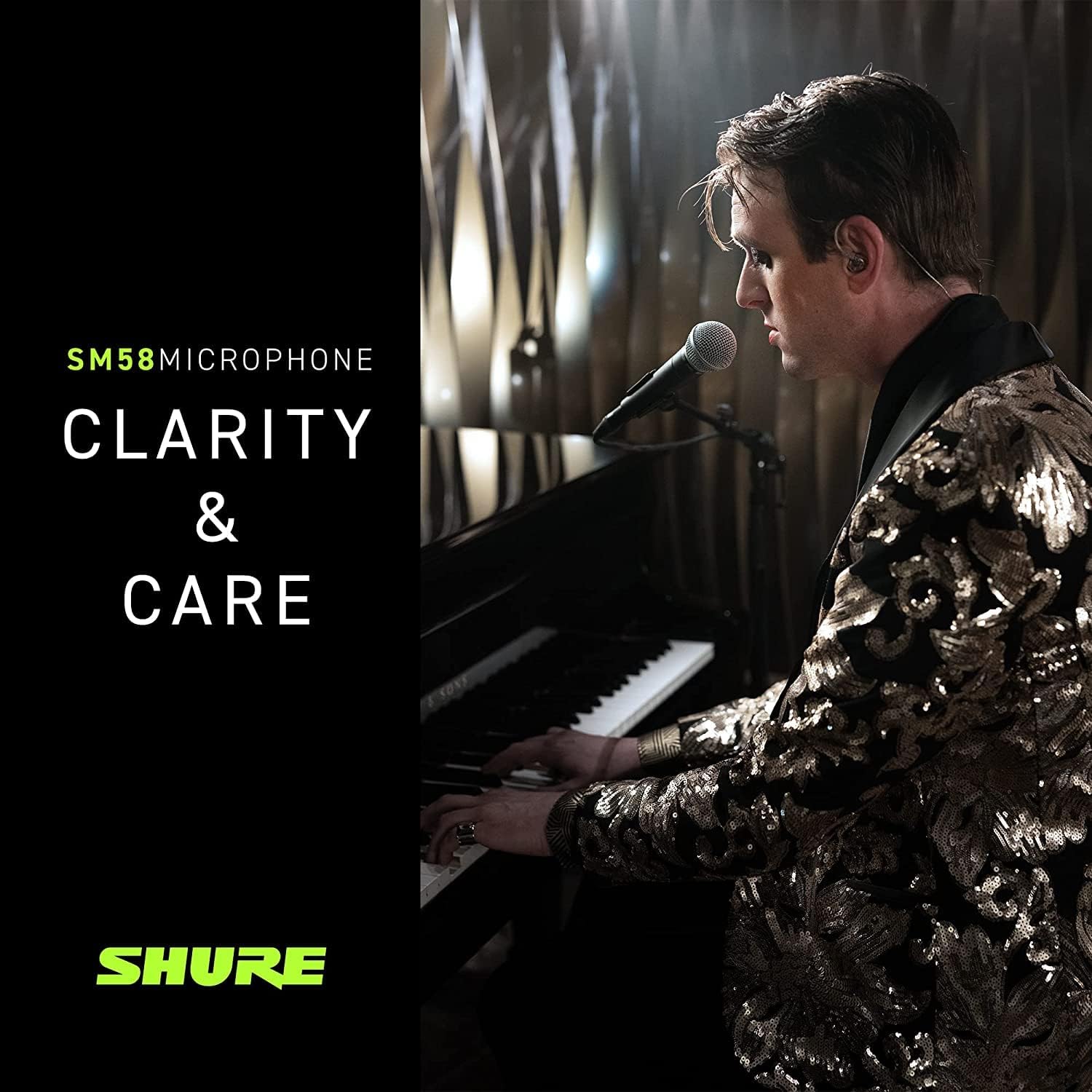
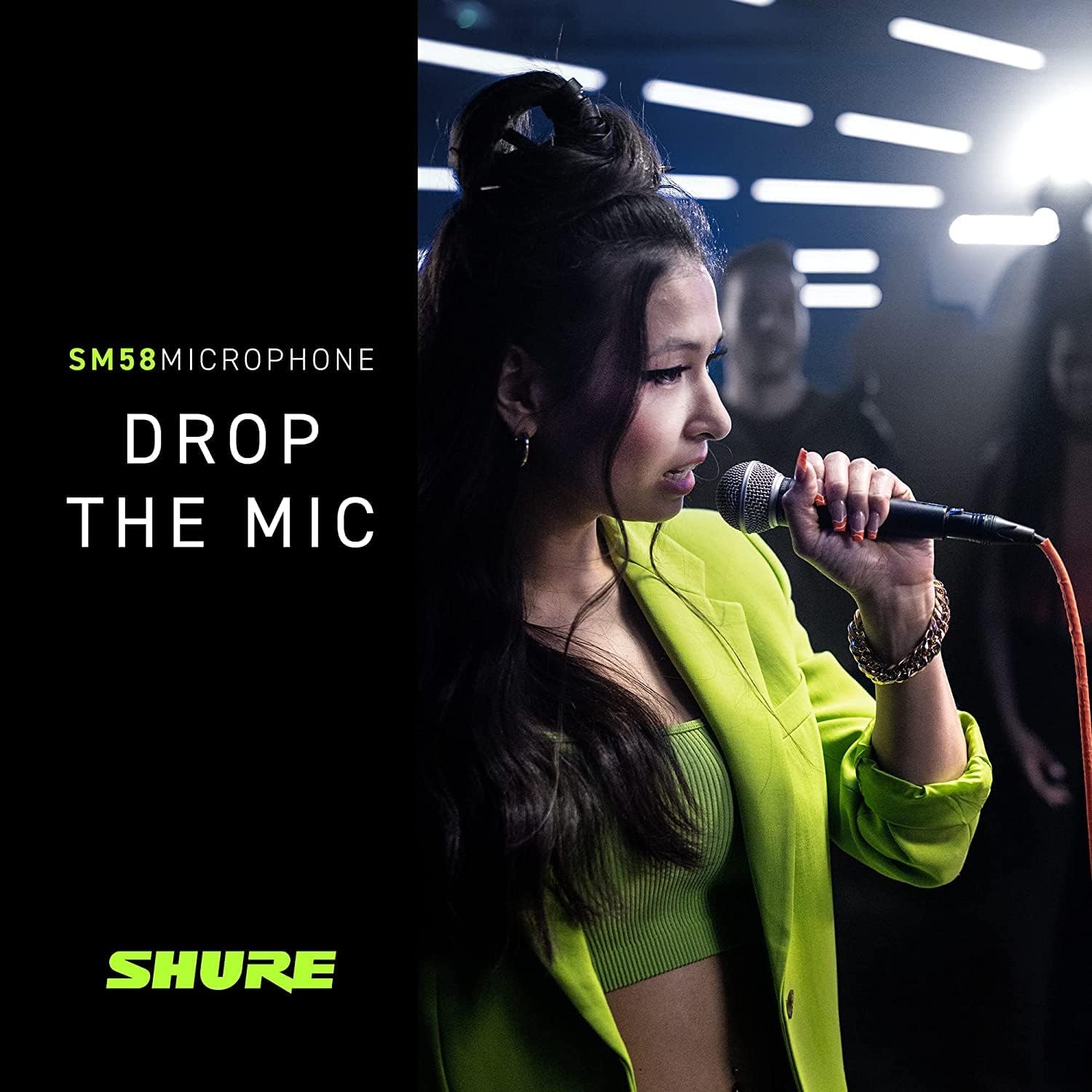
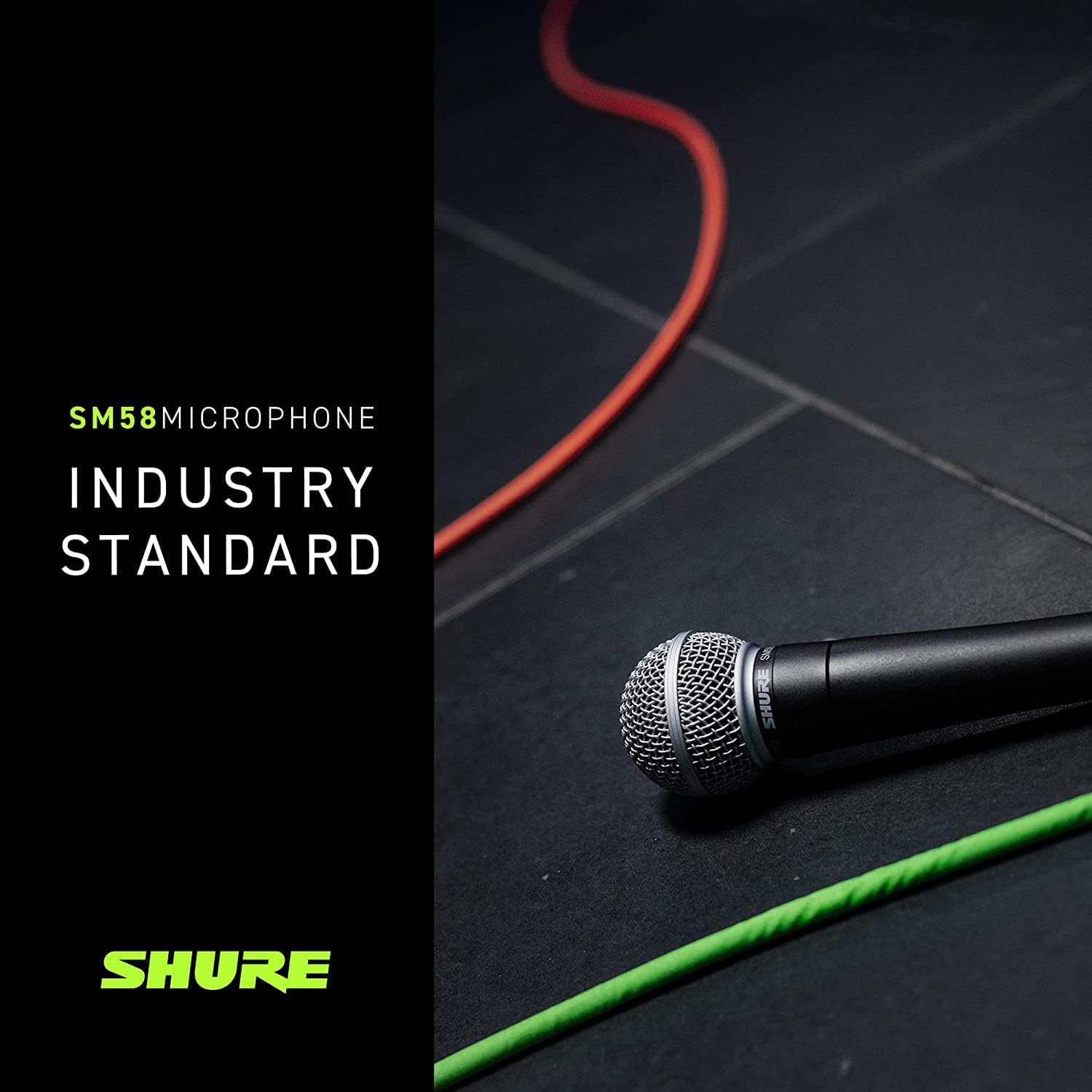

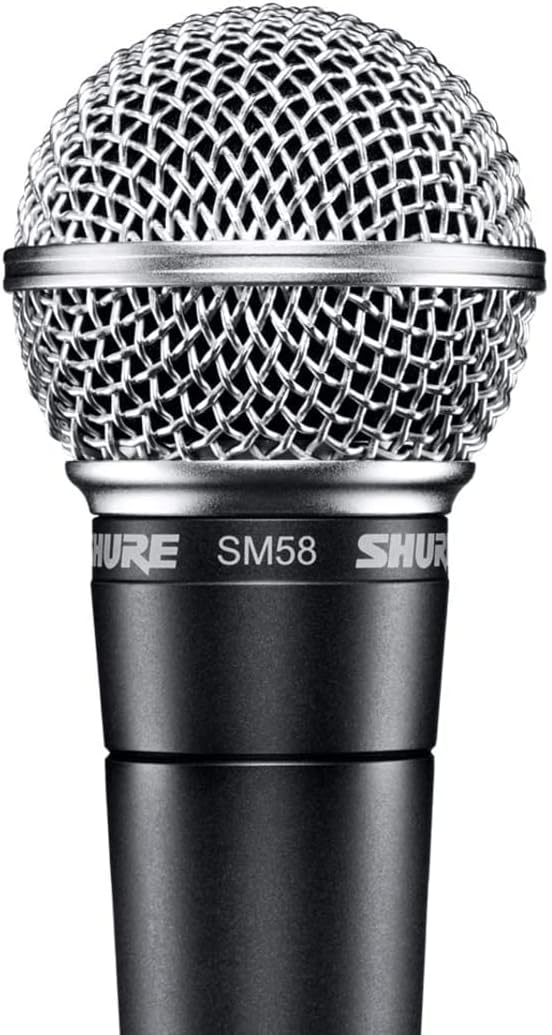

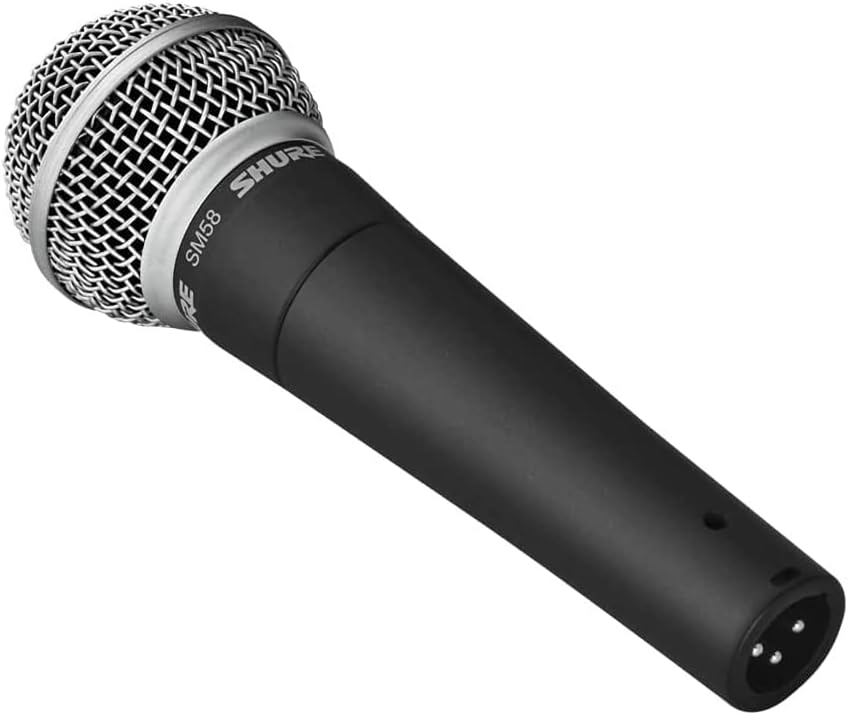
Price: $109.00
(as of Sep 02, 2025 18:06:49 UTC – Details)
The Unsung Hero and the Agile Upstart: Shure SM58 and Beta 58A Deep Dive
The Shure SM58. Just the name evokes images of smoky bars, packed concert venues, and the reassuringly familiar feel of a microphone that’s seen it all. It’s a legend, a workhorse, the industry standard for live vocal performance. But in the Shure microphone family, another contender vies for the spotlight: the Beta 58A. While the SM58 has cemented its place in history, the Beta 58A offers a different take on vocal amplification, boasting enhanced sensitivity and a tighter pickup pattern. Choosing between these two iconic microphones can be a tough decision. Both are dynamic microphones known for their ruggedness, reliability, and affordability, but their sonic characteristics and applications differ significantly. This article delves deep into the nuances of each microphone, providing a comprehensive comparison to help you determine which best suits your needs, exploring everything from their technical specifications and sound signatures to their practical applications and common use cases. We’ll even touch on how to identify a genuine Shure microphone, a crucial consideration in today’s market.
The SM58: A Timeless Classic for a Reason
The Shure SM58’s enduring popularity isn’t simply due to clever marketing or a lucky break. It’s the result of meticulous engineering and a design philosophy focused on delivering consistent, reliable performance in the most demanding environments. Its cardioid polar pattern, for instance, is a key factor in its ability to reject off-axis sound, minimizing feedback and unwanted noise. This makes it ideal for live performances where stage bleed and ambient noise are common challenges. Consider a band playing in a small, reverberant club. The SM58’s tight pickup pattern helps isolate the vocals from the drums, amplifiers, and crowd noise, resulting in a cleaner, more intelligible vocal mix. This inherent noise rejection is a significant advantage over microphones with wider pickup patterns that capture more of the surrounding environment. Furthermore, the SM58’s frequency response is carefully tailored for vocals. It features a gentle presence boost in the upper mid-range, adding clarity and articulation to the voice without sounding harsh or sibilant. This subtle EQ shaping allows the vocal to cut through the mix without requiring excessive equalization. The SM58 also boasts an internal shock mount system that effectively minimizes handling noise. This is particularly important for singers who tend to move around on stage or hold the microphone tightly. The shock mount absorbs vibrations from the hand, reducing rumble and other unwanted noises that can muddy the vocal track. Durability is another hallmark of the SM58. Its robust construction can withstand the rigors of touring and frequent use. Many stories abound of SM58s being dropped, stepped on, or even submerged in liquid, only to continue functioning perfectly. This legendary reliability makes it a favorite among sound engineers and performers who need a microphone they can depend on. Its consistent performance, combined with its reasonable price point, has solidified the SM58’s position as the go-to microphone for countless singers, speakers, and performers around the world. The shure beta 58a, while also robust, offers a different set of advantages. Let’s delve deeper into understanding the differences.
Unpacking the Technical Specifications of the SM58
Understanding the technical specifications of a microphone is crucial for evaluating its performance and suitability for different applications. The SM58 boasts a frequency response of 50 Hz to 15 kHz, which is well-suited for capturing the human voice. The slight roll-off in the low frequencies helps to reduce boominess and unwanted rumble, while the gentle boost in the upper mid-range adds clarity and presence. The cardioid polar pattern effectively rejects off-axis sound, minimizing feedback and unwanted noise. Its output impedance is rated at 150 ohms, which is a standard value for dynamic microphones. This ensures compatibility with a wide range of microphone preamplifiers and audio interfaces. The SM58’s sensitivity is -54.5 dBV/Pa (1.85 mV), which means it requires a reasonable amount of gain from the preamplifier to achieve a usable signal level. While not as sensitive as some condenser microphones, the SM58’s output is sufficient for most vocal applications. Its maximum SPL (Sound Pressure Level) handling capability is also impressive, allowing it to handle loud sound sources without distortion. This is particularly important for singers with powerful voices or for miking instruments such as snare drums or guitar amplifiers. The SM58 also features an internal pop filter that helps to reduce plosives (bursts of air from “p” and “b” sounds) and sibilance (harsh “s” sounds). This integrated pop filter is a convenient feature that eliminates the need for an external pop filter in many situations. Overall, the SM58’s technical specifications reflect its design philosophy: to deliver consistent, reliable performance in a wide range of applications. The combination of its tailored frequency response, cardioid polar pattern, and robust construction makes it a versatile and dependable microphone for both live and studio use. Its ability to handle high SPLs and reject off-axis noise further enhances its suitability for demanding environments. The design choices in the SM58 highlight its focus on practical functionality and dependable sound reproduction, making it the dependable choice for many audio professionals and performers.
The Beta 58A: Precision and Clarity in Vocal Reproduction
While the SM58 is renowned for its robust reliability and forgiving nature, the Beta 58A takes a different approach to vocal reproduction. It is also a dynamic microphone, meaning it shares the SM58’s inherent ruggedness and ability to withstand high SPLs. However, the Beta 58A distinguishes itself through its supercardioid polar pattern and enhanced sensitivity. The supercardioid polar pattern is tighter than the SM58’s cardioid pattern, providing even greater rejection of off-axis sound. This makes the Beta 58A particularly well-suited for stages with significant ambient noise or for singers who use in-ear monitors and require maximum isolation from stage bleed. Imagine a vocalist performing on a crowded stage with multiple instruments and monitors competing for sonic space. The Beta 58A’s supercardioid pattern helps to isolate the vocalist’s voice, minimizing the amount of unwanted sound that enters the microphone. This results in a cleaner, more focused vocal mix with less need for extensive EQ and noise reduction. Furthermore, the Beta 58A’s enhanced sensitivity means it produces a stronger output signal than the SM58. This can be advantageous in situations where the preamplifier gain is limited or where the vocalist has a quieter voice. The increased output level allows the vocal to cut through the mix more easily without introducing excessive noise. In terms of frequency response, the Beta 58A offers a wider and more extended range than the SM58. It features a slightly brighter and more detailed sound, with a more pronounced presence peak in the upper mid-range. This can add clarity and sparkle to the vocal, making it sound more articulate and engaging. However, this enhanced detail also means that the Beta 58A can be more sensitive to sibilance and other unwanted vocal artifacts. Therefore, it may require more careful microphone technique and EQ adjustments to achieve the desired sound. The Beta 58A also features a more advanced shock mount system than the SM58, further reducing handling noise. This is particularly beneficial for singers who tend to move around on stage or hold the microphone tightly. The improved shock mount effectively isolates the microphone capsule from vibrations, resulting in a cleaner and more noise-free vocal track. Ultimately, the Beta 58A is designed for performers who demand precision and clarity in their vocal reproduction. Its supercardioid polar pattern, enhanced sensitivity, and extended frequency response make it a powerful tool for capturing the nuances of the human voice in demanding environments. While it may require more careful handling and EQ than the SM58, the Beta 58A’s sonic performance can be truly exceptional. It presents a sharper, more defined vocal presence compared to the SM58’s warmer tone.
Delving into the Beta 58A’s Technical Specifications
A deeper look at the Beta 58A’s specifications reveals key differences that contribute to its unique sonic signature. The Beta 58A boasts a frequency response of 50 Hz to 16 kHz, slightly wider than the SM58’s. This extended frequency range contributes to its brighter and more detailed sound. The supercardioid polar pattern provides significantly greater rejection of off-axis sound compared to the SM58’s cardioid pattern. This tighter pickup pattern is ideal for minimizing feedback and unwanted noise in demanding live environments. Its output impedance is rated at 290 ohms, which is slightly higher than the SM58’s 150 ohms. While this difference is generally not significant, it’s worth noting when matching the microphone with a preamplifier. The Beta 58A’s sensitivity is -51.5 dBV/Pa (2.6 mV), which is noticeably higher than the SM58’s -54.5 dBV/Pa. This increased sensitivity allows the Beta 58A to produce a stronger output signal, making it easier to achieve a usable signal level with less preamplifier gain. The Beta 58A’s maximum SPL handling capability is also impressive, allowing it to handle loud sound sources without distortion. Its ability to withstand high SPLs makes it suitable for a wide range of vocal styles and performance environments. The Beta 58A also features an advanced pneumatic shock mount system that provides superior isolation from handling noise. This improved shock mount effectively minimizes vibrations and rumble, resulting in a cleaner and more noise-free vocal track. Furthermore, the Beta 58A utilizes a hardened steel mesh grille that is highly resistant to damage. This robust grille protects the microphone capsule from physical impact and ensures long-term reliability. Overall, the Beta 58A’s technical specifications reflect its design focus on precision, clarity, and noise rejection. The combination of its wider frequency response, supercardioid polar pattern, enhanced sensitivity, and advanced shock mount system makes it a powerful tool for capturing the nuances of the human voice in demanding live and studio environments. The Beta 58a microphone is a valuable asset for any vocalist seeking a high-performance option.
SM58 vs. Beta 58A: A Head-to-Head Comparison
Choosing between the SM58 and the Beta 58A ultimately depends on your specific needs and preferences. While both are excellent microphones, they offer different sonic characteristics and are best suited for different applications. The SM58 is renowned for its reliability, versatility, and forgiving nature. Its cardioid polar pattern, tailored frequency response, and robust construction make it an excellent choice for a wide range of vocal applications, particularly in live performance settings. It’s a workhorse microphone that can handle loud sound sources, reject off-axis noise, and withstand the rigors of touring. The Beta 58A, on the other hand, is designed for performers who demand precision and clarity in their vocal reproduction. Its supercardioid polar pattern, enhanced sensitivity, and extended frequency response make it ideal for stages with significant ambient noise or for singers who use in-ear monitors. It delivers a brighter, more detailed sound with greater rejection of off-axis noise. However, it may require more careful microphone technique and EQ adjustments to achieve the desired sound. For singers who prefer a warmer, more rounded vocal tone, the SM58 is often the preferred choice. Its gentle presence boost adds clarity and articulation without sounding harsh or sibilant. For singers who prefer a brighter, more detailed vocal tone, the Beta 58A is the better option. Its extended frequency response and pronounced presence peak add sparkle and clarity to the voice. In terms of feedback rejection, the Beta 58A offers superior performance due to its tighter supercardioid polar pattern. This makes it ideal for loud stages where feedback can be a major problem. However, the SM58’s cardioid pattern still provides excellent feedback rejection in most situations. Consider the type of music you perform. The SM58 is a good all-around choice for various genres, while the Beta 58A excels in genres where vocal clarity and detail are paramount. For spoken word applications, such as public speaking or presentations, the SM58 is often the better choice due to its forgiving nature and resistance to plosives. For studio recording, both microphones can be used effectively, but the Beta 58A’s enhanced detail and clarity may be advantageous in certain situations. Ultimately, the best way to choose between the SM58 and the Beta 58A is to try them both out and see which one sounds best with your voice and in your particular performance environment. Below is a quick reference table to aid in the decision process.
| Feature | Shure SM58 | Shure Beta 58A |
|---|---|---|
| Polar Pattern | Cardioid | Supercardioid |
| Frequency Response | 50 Hz – 15 kHz | 50 Hz – 16 kHz |
| Sensitivity | -54.5 dBV/Pa (1.85 mV) | -51.5 dBV/Pa (2.6 mV) |
| Output Impedance | 150 ohms | 290 ohms |
| Sound Signature | Warm, rounded | Bright, detailed |
| Best Use | Live vocals, general purpose | Loud stages, in-ear monitors, studio recording |
| Feedback Rejection | Good | Excellent |
| Handling Noise | Good | Excellent |
Spotting a Genuine Shure Microphone: Avoiding Counterfeits
Unfortunately, the popularity of the SM58 and Beta 58A has made them targets for counterfeiters. Purchasing a fake microphone not only results in poor sound quality but also supports unethical business practices. Therefore, it’s crucial to be able to identify a genuine Shure microphone. One of the first things to check is the packaging. Genuine Shure microphones come in high-quality packaging with clear printing and accurate product information. Look for any misspellings, blurry images, or inconsistencies in the packaging design. Examine the microphone itself closely. Genuine Shure microphones are made with high-quality materials and feature precise construction. Look for any imperfections in the finish, such as scratches, dents, or uneven paint. The microphone’s weight can also be an indicator of authenticity. Counterfeit microphones often use cheaper materials, making them lighter than genuine Shure microphones. Check the microphone’s serial number. Genuine Shure microphones have a unique serial number printed on the microphone body. You can verify the serial number on the Shure website to ensure that it is a legitimate product. Pay close attention to the sound quality. Counterfeit microphones typically have poor sound quality, with a thin, distorted, or noisy signal. Compare the sound of the microphone to that of a known genuine Shure microphone to see if there are any noticeable differences. Examine the microphone’s grille. Genuine Shure microphones have a sturdy, well-constructed grille that protects the microphone capsule. Counterfeit microphones often have flimsy grilles that are easily damaged. Inspect the microphone’s XLR connector. Genuine Shure microphones use high-quality XLR connectors that provide a secure and reliable connection. Counterfeit microphones may use cheaper connectors that are prone to failure. Purchase from authorized Shure dealers. The best way to ensure that you are buying a genuine Shure microphone is to purchase it from an authorized Shure dealer. Authorized dealers are committed to selling genuine Shure products and can provide expert advice and support. Be wary of deals that seem too good to be true. If the price of a Shure microphone is significantly lower than the prices offered by authorized dealers, it’s likely a counterfeit. In conclusion, take your time and carefully inspect any Shure microphone before purchasing it. By following these tips, you can minimize the risk of buying a counterfeit product and ensure that you are getting a genuine Shure microphone that will deliver years of reliable performance. Considering all aspects of authenticity is crucial to ensure you are receiving the value and performance expected from a Shure microphone. The investment in a genuine shure beta 58a will prove worthwhile over time.
FAQ: Your Shure SM58 and Beta 58A Questions Answered
What are the main differences between the SM58 and the Beta 58A in terms of sound quality?
The Shure SM58 and Beta 58A, while both dynamic microphones designed for vocal performance, possess distinct sonic characteristics. The SM58 is known for its warm, rounded tone, making it a versatile choice for various vocal styles. It features a slight presence boost in the upper mid-range, adding clarity without harshness. The Beta 58A, in contrast, offers a brighter, more detailed sound. Its extended frequency response and pronounced presence peak contribute to a more articulate and engaging vocal. This difference stems largely from their internal design and frequency response curves. The SM58’s tailored response provides a familiar and forgiving sound, while the Beta 58A aims for higher fidelity and sonic accuracy. Ultimately, the choice depends on personal preference and the specific vocal characteristics one wants to emphasize.
Is the Beta 58A better than the SM58 for live performance?
Whether the Beta 58A is “better” than the SM58 for live performance depends heavily on the specific performance environment and the vocalist’s needs. The Beta 58A’s supercardioid polar pattern offers superior rejection of off-axis sound, making it ideal for loud stages with significant ambient noise or for singers who use in-ear monitors and require maximum isolation. Its enhanced sensitivity can also be advantageous for quieter vocalists or situations with limited preamplifier gain. However, the SM58’s cardioid pattern still provides excellent feedback rejection in most situations, and its more forgiving nature can be beneficial for singers who are less experienced with microphone technique. Furthermore, the SM58’s warmer tone may be preferred for certain vocal styles or genres. The Shure Beta 58A’s sensitivity to sibilance may also necessitate more precise EQ and handling. Both microphones are robust and reliable, so the “better” choice truly boils down to individual requirements and preferences.
Can I use the SM58 or Beta 58A for recording instruments, and if so, what instruments are they best suited for?
While primarily designed for vocals, both the SM58 and Beta 58A can be used for recording instruments, albeit with some limitations. The SM58, with its robust construction and ability to handle high SPLs, can be a decent choice for recording snare drums or guitar amplifiers. Its forgiving nature can help to tame harsh or brittle sounds. The Beta 58A, with its brighter and more detailed sound, may be suitable for recording acoustic guitars or other instruments where clarity and articulation are desired. However, condenser microphones are generally preferred for recording instruments due to their greater sensitivity and wider frequency response. Dynamic microphones like the SM58 and Beta 58A can still be useful tools in the studio, particularly for capturing loud or percussive sounds, or when a more aggressive or raw tone is desired. Experimentation is key to finding the best application for each microphone.
What are the typical street prices for a new SM58 and Beta 58A?
The street prices for new Shure SM58 and Beta 58A microphones can vary slightly depending on the retailer and any ongoing promotions. Generally, the SM58 is priced lower than the Beta 58A, reflecting its more basic design and construction. As of late 2023, you can typically find the SM58 priced around $99 USD, while the Beta 58A sells for around $159 USD. These prices are for the standard XLR versions of the microphones. Wireless versions or bundles may have higher price points. It’s always a good idea to shop around and compare prices from different retailers to ensure you are getting the best deal. Also, be wary of deals that seem too good to be true, as they may be indicative of counterfeit products. Purchasing from authorized Shure dealers is the best way to ensure that you are getting a genuine microphone at a fair price. Remember to always check for current pricing as market conditions may fluctuate.
How durable are the SM58 and Beta 58A? Are they suitable for touring musicians?
Both the SM58 and Beta 58A are renowned for their exceptional durability, making them highly suitable for touring musicians. Shure has built a reputation for creating robust and reliable microphones that can withstand the rigors of the road. The SM58, in particular, has earned legendary status for its ability to survive drops, impacts, and even exposure to moisture. The Beta 58A shares this durability, thanks to its rugged construction and hardened steel mesh grille. Both microphones feature internal shock mount systems that help to protect the microphone capsule from damage. While it’s always advisable to handle microphones with care, touring musicians can have confidence in the SM58 and Beta 58A’s ability to withstand the demands of frequent travel and live performance. The Shure Beta 58a is built to last through many tours and live performances. Proper care and storage are still recommended to extend their lifespan.
What kind of maintenance do the SM58 and Beta 58A require?
The SM58 and Beta 58A are relatively low-maintenance microphones. However, some basic care can help to prolong their lifespan and ensure optimal performance. Regularly clean the microphone grille with a soft brush to remove dust and debris. You can also sanitize the grille with a mild disinfectant spray, being careful not to get any liquid inside the microphone capsule. Avoid dropping or exposing the microphone to extreme temperatures or humidity. Store the microphone in a protective case when not in use. Periodically inspect the XLR connector for any signs of damage or corrosion. If the microphone cable becomes frayed or damaged, replace it immediately. With proper care, the SM58 and Beta 58A can provide years of reliable service. Avoid using excessive force when connecting or disconnecting cables, and always store the microphones in a clean, dry environment to prevent damage.
What is the role of the pop filter in the SM58 and is it sufficient, or should I consider an external pop filter?
Both the SM58 and Beta 58A feature an internal pop filter, designed to reduce plosives – those disruptive “p” and “b” sounds that occur when air blasts into the microphone. The internal pop filter is a multi-layered mesh screen positioned inside the microphone head, providing a barrier against these bursts of air. In many cases, the internal pop filter is sufficient, especially for experienced vocalists who have good microphone technique. However, for singers with particularly strong plosives, or in studio recording situations where pristine audio is paramount, an external pop filter might be beneficial. External pop filters provide an additional layer of protection and can further reduce plosives, resulting in a cleaner, more professional sound. Ultimately, the need for an external pop filter is subjective and depends on the individual vocalist and the specific recording or performance environment. The internal filter reduces plosives, but external filters offer additional protection.




